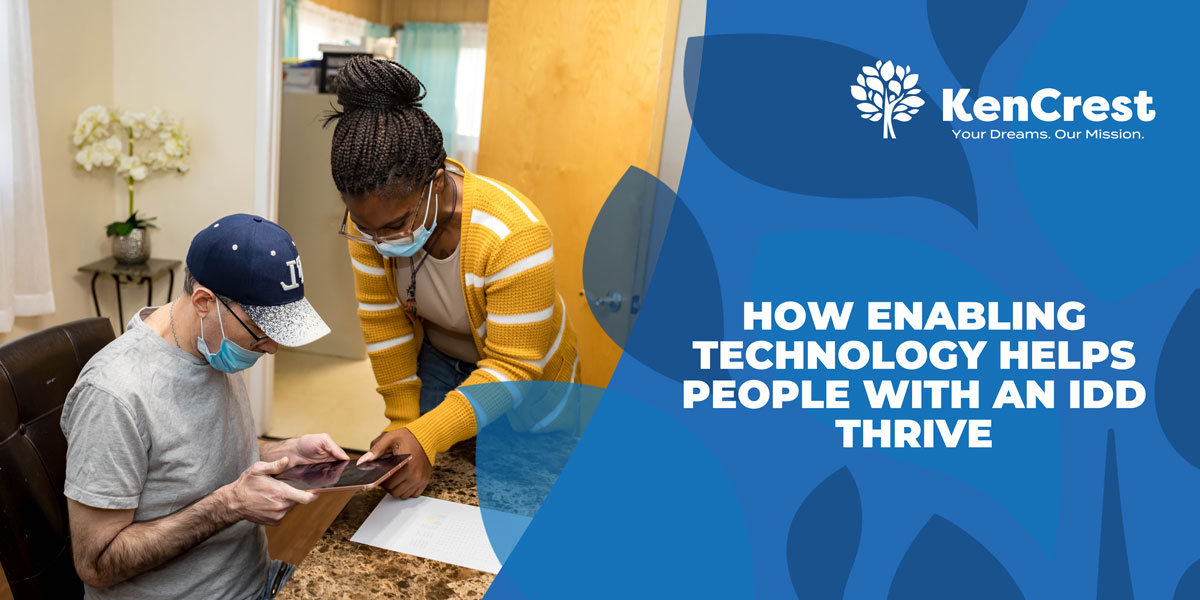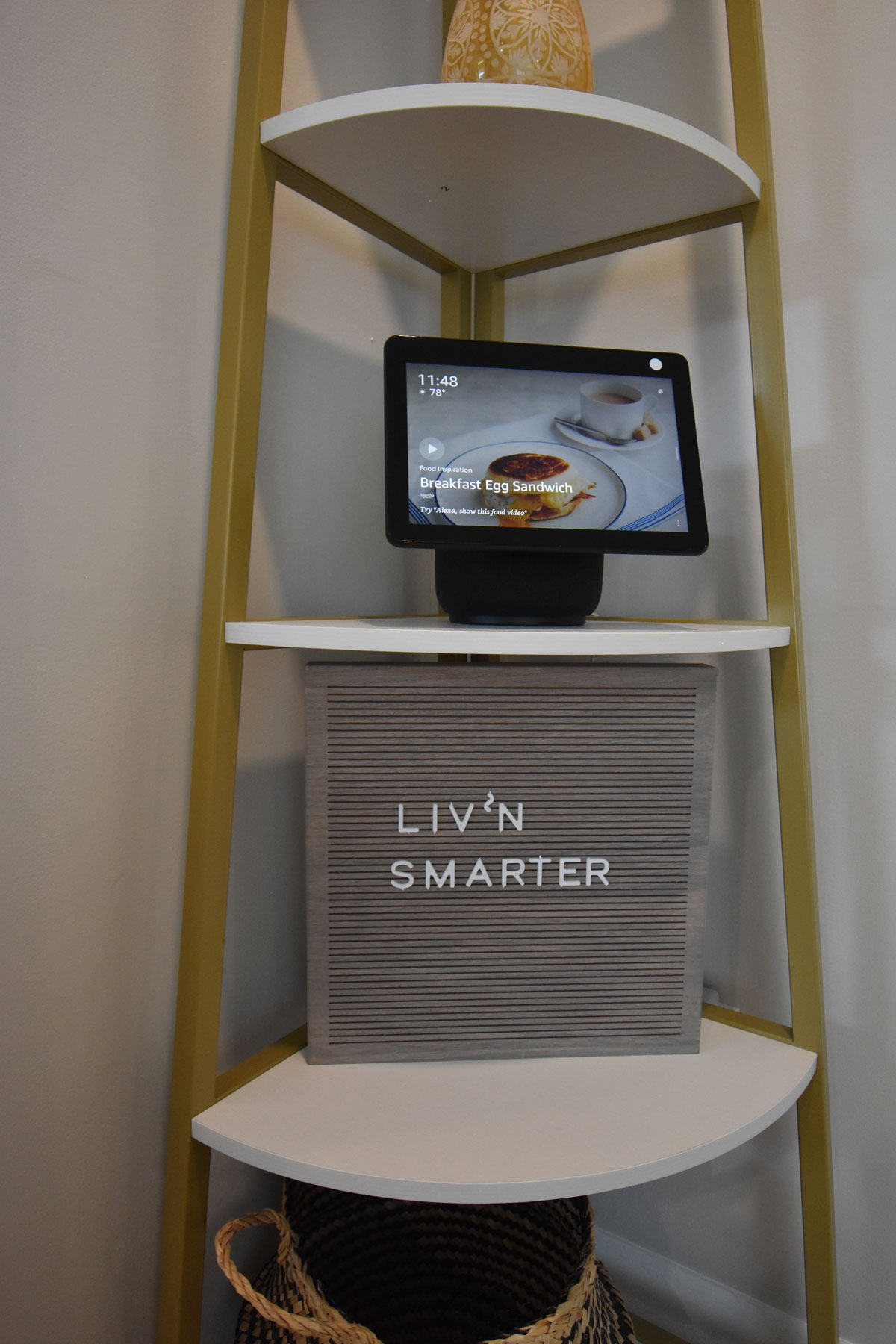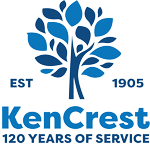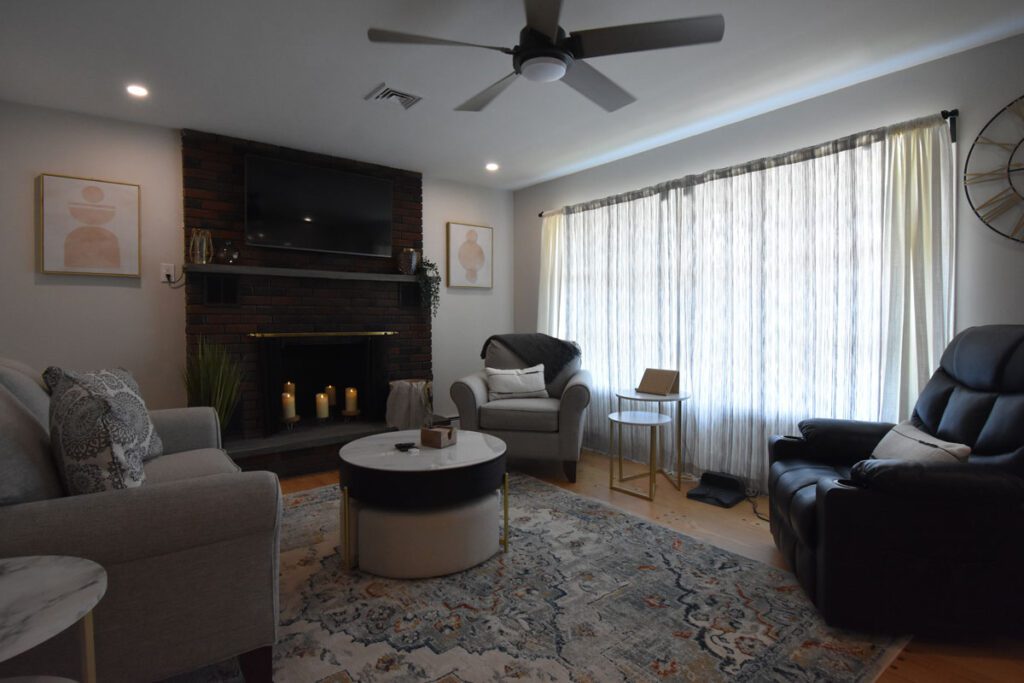
KenCrest Outcome Specialist Centelia Forbes talks about how Enabling Technology has helped the people she supports.
By Sydney Kerelo
For thousands of individuals with an intellectual or developmental disability (IDD), doing daily tasks like turning lights on or cooking dinner can be incredibly challenging but not impossible. Since 2020, KenCrest’s Enabling Technology (ET) team has dedicated its time to finding innovative ways to support people within their homes, communities, and jobs to become more independent.
According to the Department of Intellectual & Developmental Disabilities, “Enabling Technology is an innovative way to support to become more self-sufficient using various off-the-shelf and customized devices, person-centered methods, and remote support technology solutions.”
At KenCrest, one can choose from several levels of technology, whether that’s voice assistants to turn the lights on or off or a curtain bot that allows a person to press a button to open and shut their blinds.
Off-the-shelf items like Alexa, video doorbells, or even phone-based applications exist. Then, more complex technologies like smart light bulbs or medication dispensers are specifically customized for that person.
- The kitchen within the Smarter Living home // Photo by Aubrey Hoffert
Photos of the Smarter Living home. // Photo by Aubrey Hoffert
Recently, KenCrest opened its first-ever Smarter Living Home. This home showcases the various types of technology anyone can use. Visitors can schedule visits to explore different technology devices and decide what is right for them.
We sat down with Centelia Forbes, an Outreach Specialist (OS) at KenCrest, to talk about how she has seen Enabling Technology to support people with disabilities to become self-sufficient and achieve lifelong goals.
-
Do you think Enabling Technology is a valuable tool for people with disabilities?
I see the value of Enabling Technology enhancements for individuals within their homes and as part of their lives. With ET, the individuals we support can gain access to various opportunities that will help them find ways to be more involved in their daily routines.
-
As an OS, why are you passionate about getting ET to your participants?
As an OS, I have seen individuals light up when they are allowed to explore different devices displayed within the smart home. The ET shown to many individuals I serve has allowed them to be more independent in their activities of daily living (ADLs), such as dental care, showering, and restroom hygiene. ET has also provided devices that are not even in the smart home.
-

Photo by Aubrey Hoffert
What story exemplifies a successful outcome of ET used by a person you serve?
So far, outcomes based on ET that have been used have helped give all individuals an opportunity to be more independent with brushing their teeth with computer visual /voice guidance. I have another individual who can control her television with her iPad, and she now has control over what she wants to watch and can turn it off and on at will. I have seen an individual who wants to be independent in the thoroughness of his hygiene bathroom practices using a bidet. They all had the chance to be more independent with the help of the Enabling Tech team.
-
Why do you think it’s so important to have people KenCrest supports visit the Smarter Living Home?
There is so much at the Smarter Living Home that people don’t know about. Visiting has allowed me to provide access to support and resources that I wouldn’t have thought to give until now.
-
How has your viewpoint of Enabling Technology changed since the Smarter Living Home opened?
The ET assessment process has been an eye-opener for me. Having known some of my individuals for six years, when they walk through the home, you see many of them in a different light. The Smart Home has done a great job exposing our individuals to possibilities that have been recognized during the last ten years. The fact that KenCrest can bring about this service has been fantastic!



